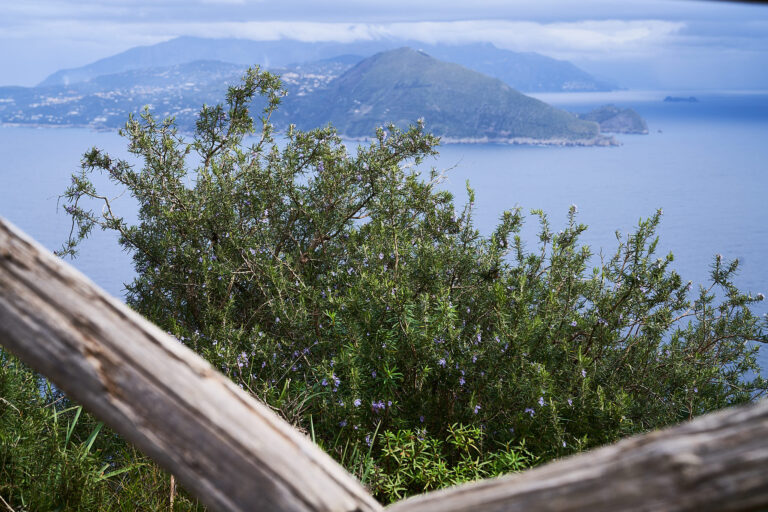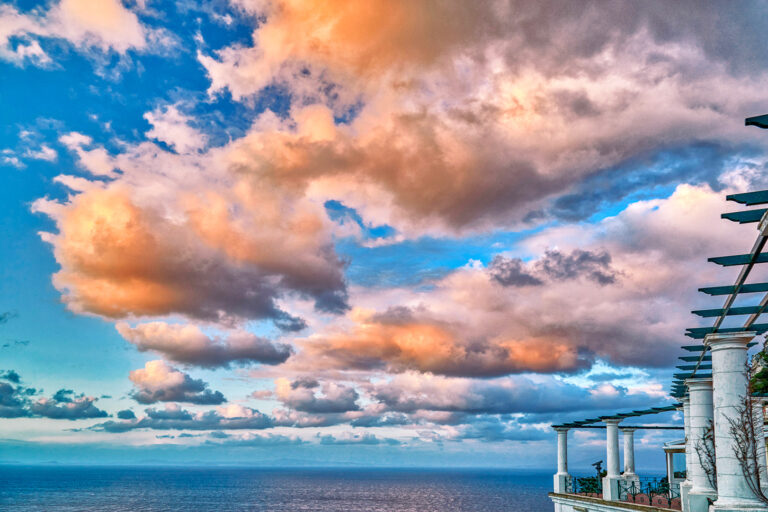Between the second half of the nineteenth century and the first of the twentieth century, a large and anomalous colony of wealthy foreigners was formed in Capri. Among them abounded bankers, entrepreneurs, artists, eccentric types, lesbians, pederasts, femmes fatales, heavy opium smokers …
These people, struck by the beauty of the place, made it their residence, building enchanting villas and in many cases reserving a place in the cemetery.
Around these foreigners great economic opportunities were created for the people of Capri;
however, for some of these characters, despite the profuse good, the island was fatal.
An emblematic case, although not very well known, is that of Hugo Andreae, a wealthy German banker, married to a young Italian, Emma De Simone.
The good Hugo had a sumptuous villa built as a retreat for him and his wife at the beginning of Via Tragara, with royal palace interiors and a mythical garden full of statues, colonnades and exotic animals.
Since he was a type who cared about religion, following the completion of his home, he financed the construction of the Evangelical Church nearby; but, to obtain the necessary authorizations, he was asked in exchange to also finance the construction of a small church in Marina Piccola, for the fishermen of the area. What will be the Church of Sant’Andrea and which today is a chapel as much loved by Capri as by tourists, as well as a sought-after location for celebrating weddings.
For this project, the banker decided to rely on Riccardo Fainardi, a painter-sculptor originally from Collecchio, but who has been stationed in Capri for some time.
In 1899, the Evangelical Church was inaugurated, which had so much luck among the large “foreign colony” of Capri, while the following year, on Christmas Eve in 1900, fishermen also celebrated their church.
However, in the same year, (according to some, on that very Christmas night), Andreae discovered that his beloved Emma was just betraying him with his “technician”, the reckless thirty-five year old Riccardo Fainardi …
The poor banker, deeply wounded, left Capri taking his wife away with him, but after about a year, unable to bear the pain, he took his own life.
At that point Emma De Simone returned to Capri and married Fainardi. In a (perhaps innocently) mocking way he renamed the house, changing the name from Villa Andreae to Villa Capricorno. But her presence with her new husband did not last long: the chatter that arose forced them to sell everything and leave the island. Emma died in 1924 while Fainardi enjoyed the inheritance until the day of his death, which took place on Christmas Eve 1959.
Another foreigner who made the fortune of the island, but not his own, was the Scottish doctor George Sidney Smith Clark, who, having landed on Capri after being widowed, fell in love with the island as much as with an islander, Anna Lembo. , whom he married in 1856.
Determined to stay on the island, he thought it best to open a clinic here, convinced that he could attract the wealthy northern Europeans who were already leaving for southern Italy in search of a warm sun to alleviate the suffering of rheumatism and lung diseases. Thus was born the Quisisana.
However, the lack of enough patients led Clark to make a good hotel.
Clark was made an honorary citizen, also for his commitment to the poor and the local sick, and is still remembered today with a plaque in the courtyard of the town hall of Capri and with a place of honor in the cemetery of Anacapri.
But after his death in 1868, his wife Anna and little son Alfredo had a lot of difficulties in carrying on the business.
A good-looking young Caprese, Federico Serena, the son of a baker, took advantage of this. At that time, after a six-year experience in England, he was working as a waiter at the Quisisana. He seduced the widow Clark and letting her know that he would marry her, he rented the hotel for 30 years at a negligible amount. Once in possession of the hotel, he no longer wanted to hear about poor Anna and married a beautiful Frenchwoman, the housekeeper of a hotel guest.
Later, the widow Clark and his children, now in difficulty, sold him the Quisisana in exchange for an annuity and a villa near the hotel.
Federico Serena, on the other hand, became the most successful entrepreneur, as well as the beloved mayor of Capri (for thirteen years) and was appointed Commander of the Crown of Italy.
According to someone, in addition to Clark’s widow, Serena would also have seduced the German billionaire Friedrich Alfred Krupp, the richest man in Germany, “the king of cannons” (and of “capitons”, according to Matilde Serao), who entrusted him the management of his money and the responsibility for the construction of Via Krupp.
According to others, this chatter about Krupp’s alleged homosexuality would be slander born out of reasons of political confrontation.
The fact is that, following his death, Krupp’s heirs demanded part of the money entrusted to Federico Serena back, and following his death, the widow gave up the hotel to repay all the debts.
Finally, the story of Otto Sohn-Rethel, an excellent painter of the Düsseldorf school and an important German entomologist, leaves a bitter taste.
Born in 1877, after having spent the first years of his youth traveling to the East (he visited China, Japan and Indonesia), from where he returned with a large collection of artistic objects, he landed for the first time in Anacapri in 1904. After the First World War, he settled there, devoting himself to his greatest passions: painting nudes and catching butterflies.
He formed a great friendship with the Swiss futurist painter Gilbert Clavel, who accompanied him on his excursions to hunt for moths, and opened a gallery in his house, Villa Lina, where artists could freely exhibit their works and meet to discuss art.
In 1943, when Italy signed an armistice with the Allies and then declared war on Germany, Otto, to avoid the expropriation of the house, made it in the name of a friend from Anacapri, his former servant; who, however, at the end of the war, instead of returning it to him, took possession of it with all the goods, paintings and drawings contained in it.
He was then hosted by his industrial friend Hans Berg, his neighbor.
Throughout his life, Otto discovered, studied and collected many types of butterflies and moths, some of which were previously unknown. A subspecies of moth, the Chortodes Morrisii Sohnretheli, was also named after him.
The British Museum wanted to buy his very rich collection, but Otto refused the offer, saying that it had to be a heritage of the island of Capri.
However, when the “butterfly” died, his entire collection ended up rotting in a basement.









